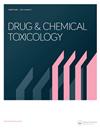看不见的敌人:通过动物研究评估驱蚊剂对人类健康的威胁。
IF 2.1
4区 医学
Q3 CHEMISTRY, MULTIDISCIPLINARY
引用次数: 0
摘要
蚊子传播的疾病继续对人类构成重大威胁,尤其是在发展中和欠发达地区,因为这些地区获得有效预防措施的途径仍然有限。驱蚊剂是防治这些疾病的基石,可提供防止蚊虫叮咬的屏障。驱蚊剂有多种配方,包括外用软膏和商用喷雾器,成分各不相同。常见成分包括作为溶剂的脱臭煤油(DOK)、拟除虫菊酯、酰胺、香精油和增效剂。尽管这些驱蚊剂被广泛使用,但人们对其毒理学特征的了解仍然不足,因此对其在长期或过度接触情况下的安全性产生了疑问。然而,尽管这些驱蚊剂在预防蚊媒疾病方面的功效已得到证实,但它们对人类和环境的潜在毒性仍令人担忧。本综述批判性地研究了有关驱蚊剂毒性的现有文献,重点关注其对人类健康和环境可持续性的不利影响。通过对现有研究的广泛分析,本综述旨在揭示与驱蚊剂相关的潜在健康风险,如对人体的皮肤刺激、呼吸系统并发症和过敏反应。本文章由计算机程序翻译,如有差异,请以英文原文为准。
Invisible enemies: evaluating human health threats of mosquito repellents through animal studies.
Mosquito-borne diseases continue to pose significant threats to human populations, especially in developing and underdeveloped regions, where access to effective preventive measures remains limited. Mosquito repellents represent a cornerstone in the arsenal against these diseases, providing a barrier against mosquito bites. Mosquito repellents come in various formulations, including topical ointments and commercial vaporizers, with varying compositions. Common constituents include deodorized kerosene (DOK) as a solvent, pyrethroids, amides, essential oils for fragrance, and synergists. Despite their widespread use, the toxicological profiles of these repellents remain inadequately understood, raising questions about their safety in prolonged or excessive exposure scenarios. However, while their efficacy in preventing mosquito-borne illnesses is well-established, concerns persist regarding their potential toxicity to humans and the environment. This review critically examines the existing literature on the toxicity of mosquito repellents, focusing on their adverse effects on human health and environmental sustainability. Through an extensive analysis of available research, this review aims to shed light on the potential health risks associated with mosquito repellents, such as dermatological irritation, respiratory complications, and allergic reactions in humans.
求助全文
通过发布文献求助,成功后即可免费获取论文全文。
去求助
来源期刊

Drug and Chemical Toxicology
医学-毒理学
CiteScore
6.00
自引率
3.80%
发文量
99
审稿时长
3 months
期刊介绍:
Drug and Chemical Toxicology publishes full-length research papers, review articles and short communications that encompass a broad spectrum of toxicological data surrounding risk assessment and harmful exposure. Manuscripts are considered according to their relevance to the journal.
Topics include both descriptive and mechanics research that illustrates the risk assessment implications of exposure to toxic agents. Examples of suitable topics include toxicological studies, which are structural examinations on the effects of dose, metabolism, and statistical or mechanism-based approaches to risk assessment. New findings and methods, along with safety evaluations, are also acceptable. Special issues may be reserved to publish symposium summaries, reviews in toxicology, and overviews of the practical interpretation and application of toxicological data.
 求助内容:
求助内容: 应助结果提醒方式:
应助结果提醒方式:


